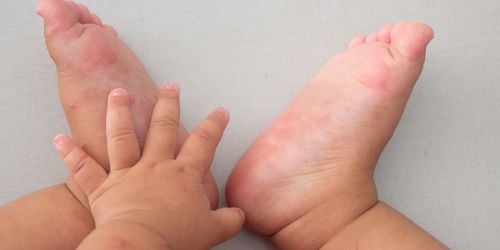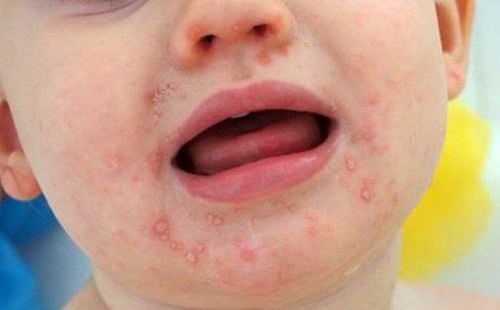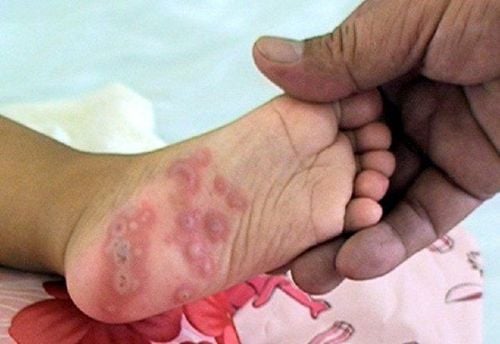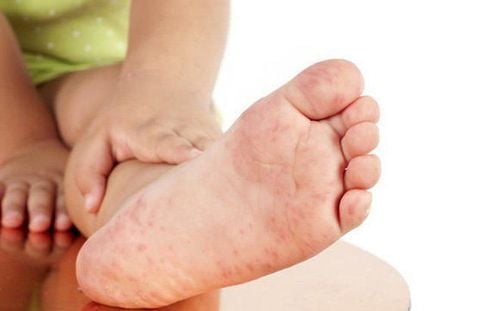This is an automatically translated article.
The article is professionally consulted by Master, Doctor Nguyen Thi An - Pediatrician - Neonatologist - Department of Pediatrics - Neonatology - Vinmec Ha Long International General Hospital.Hand, foot and mouth disease is a common infectious disease, occurs sporadically all year round, but tends to increase at two times: March - May and September - December in most provinces in the country. In which, hand, foot and mouth level 1 is the mildest level of the disease.
1. The causative agent of hand, foot and mouth disease
Hand, foot and mouth disease is an infectious disease caused by intestinal viruses, which can be transmitted directly from person to person. The main route of disease transmission is the gastrointestinal tract and easily causes large epidemics. In Vietnam, the two most common HFMD pathogens are Coxsackie virus A16 and Enterovirus 71 (EV71).Hand, foot and mouth disease can occur at any age, but the highest rate is in the group of children under 5 years old, which is especially concentrated and causes many complications in children under 3 years old.
The disease spreads from person to person, so every year there are outbreaks of hand, foot and mouth disease in most localities. Factors that increase the likelihood of disease in children include children living in a group environment such as going to kindergarten, kindergarten or going to crowded places such as supermarkets, parks...
Hand, foot and mouth disease is currently divided into 4 levels from mild to severe:
Hand, foot and mouth disease grade 1: Present in children with only mouth ulcers and/or skin lesions;
Hand, foot and mouth grade 2a: In addition to mouth ulcers and skin lesions, there is also one of the following signs:
The child has a startle expression less than 2 times in 30 minutes and the doctor does not notice the startle at examination The child has a fever high above 39 degrees Celsius, fever lasts for more than 2 days, vomiting many times, change in consciousness lethargy or crying for no reason; Hand, foot and mouth from grade 2b to level 3, grade 4: These are more severe disease levels, complications appear in children such as neurological, cardiovascular, respiratory complications...
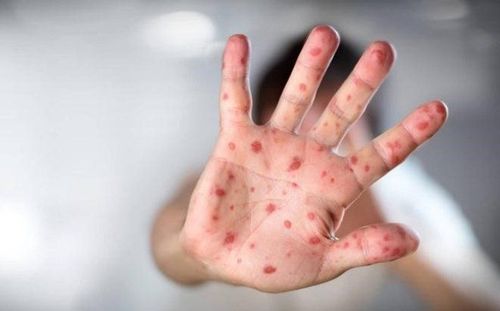
Tay chân miệng là bệnh truyền nhiễm do các chủng virus đường ruột gây ra, có thể lây trực tiếp từ người sang người
2. How many days will it take to get rid of hand foot and mouth disease?
Hand, foot and mouth disease is an infectious disease caused by a virus, so there is currently no specific treatment. Therefore, the principle of hand, foot and mouth treatment is mainly to treat symptoms, to support the body, to prevent and treat complications that occur in children, especially when complications of circulatory and respiratory failure occur. .Among the disease levels, only grade 1 hand, foot and mouth disease is treated as an outpatient and followed up with follow-up visits according to the doctor's appointment. Support measures for children with hand, foot and mouth disease grade 1 include:
Adequate nutrition depending on age; When children have fever, they can use Paracetamol with a dose of 10-15mg/kg/time orally every 6 hours; Personal hygiene for children is clean; Give the child plenty of rest, avoiding stimulation altogether; Most importantly, take your child to the doctor by appointment. Usually, grade 1 hand, foot and mouth disease will be re-examined every 1-2 days for the first 8-10 days. In case the child has a fever, the doctor should be re-examined every day until the fever has stopped for at least 48 hours.
Hand, foot and mouth level 1 can be treated and monitored at home. However, if the child has the following symptoms, it is necessary to take the child to a medical facility immediately:
The child has a high fever, the body temperature is over 39 degrees Celsius; Changes in breathing rate such as tachypnea, dyspnea, involuntary breathing; Sudden onset of a startle in the child's sleep; The child is lethargic, fussy for no reason or has trouble sleeping; Vomiting a lot; For toddlers, parents should pay close attention to their children when they see them stagger or shake their limbs. Signs of circulatory failure such as purple skin, cold hands and feet, sweating; The child suddenly has a seizure or is in a coma. In most cases, grade 1 hand, foot and mouth disease will resolve on its own without excessive treatment within 7 to 10 days. However, in special situations, the doctor may advise parents more about treatment measures or how to care for hand, foot and mouth disease at home until the disease is completely cured.
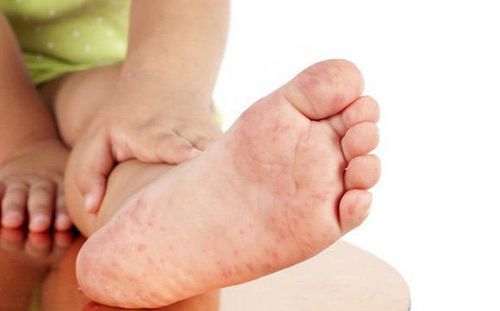
Trong hầu hết các trường hợp tay chân miệng độ 1 sẽ tự khỏi mà không cần can thiệp điều trị quá nhiều trong khoảng thời gian từ 7 đến 10 ngày
3. Signs to identify children with hand, foot and mouth disease
Hand, foot and mouth disease usually goes through the following stages:3.1. The incubation period of hand, foot and mouth disease is about 3-7 days.
3.2. The onset phase lasts 1-2 days with signs such as low-grade fever, anorexia, more fatigue than usual or accompanied by diarrhea;
3.3. Full-blown stage The full-fledged stage can last 3-10 days and children often have typical signs of hand, foot and mouth such as:
Mouth ulcers: The mucosa of the mouth appears red sores, possibly burning. water with a diameter of about 2-3mm. Superinfected sores cause a lot of pain and are the factors that cause children to stop eating, to stop sucking, to increase salivation; Typical lesions are blister-like rashes on the palms, soles, knees, and buttocks. Skin lesions usually persist for less than 7 days, heal with bruising, and are rarely superinfected; Fever: Usually mild, high fever suggests complications; In addition, this stage may appear neurological, circulatory or respiratory complications and endanger the child's health;
3.4. Stage of remission Following the full-blown phase, the remission period lasts about 3-5 days. Children usually recover completely and without complications if they have hand, foot and mouth disease of grade 1.
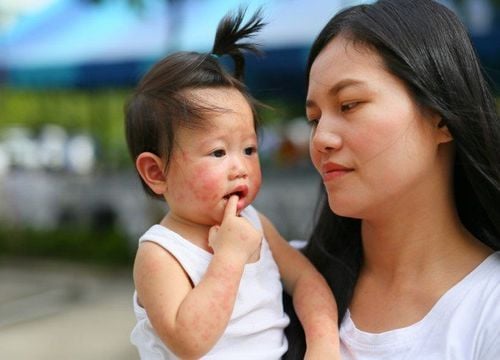
Loét miệng, phát ban dạng phỏng nước, sốt nhẹ là những dấu hiệu điển hình của bệnh tay chân miệng
4. Effective prevention of hand, foot and mouth disease
Currently, there is no specific vaccine against hand, foot and mouth disease. Therefore, the application of measures to prevent hand, foot and mouth disease from spreading in the community is extremely necessary: Especially for hand, foot and mouth disease, prevention in the community, especially in places where frequent gatherings crowded with children such as kindergartens, kindergartens, schools, entertainment places for children... Regular personal hygiene, always wash hands with soap (especially after changing clothes, changing diapers) or after contact with feces, saliva, or water burns of infected subjects). Implement good eating and drinking hygiene, ensure the use of clean water in daily life, eat cooked food, drink boiling water, eating utensils need to be washed before use, do not feed food from the mouth of adults to children; children should not eat junk food; do not allow children to suck their thumbs or suck on toys; Do not allow children to share towels, pillows, eating utensils, toys of others that have not been disinfected. Regularly wash toys, utensils, and floors for families with young children. The floor should be cleaned with 2% Chloramin B disinfectant solution or can be replaced with other disinfecting solutions. Absolutely do not let children come into contact with sick people or people with suspected signs of hand, foot and mouth disease As soon as a child shows signs of illness, parents need to take the child to see a doctor or immediately notify the medical agency. the most recent health status of the child. Observe the isolation of sick children at home in case the child has hand, foot and mouth disease of grade 1, do not bring the child to kindergartens, schools, or other places where other children gather in the first 10-14 days of the illness. Hospitalization for treatment immediately when hand foot mouth grade 1 becomes severe.
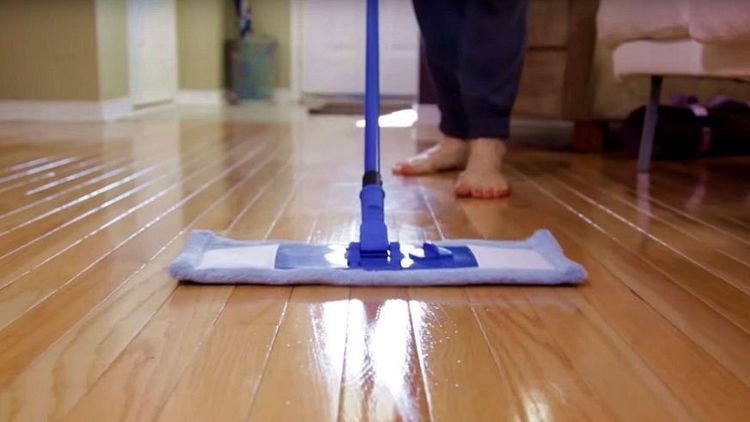
Nên lau sàn nhà bằng dung dịch khử khuẩn Cloramin B 2% hoặc có thể thay thế bằng các dung dịch khử khuẩn khác để phòng ngừa bệnh tay chân miệng
Pediatrics department at Vinmec International General Hospital is the address for receiving and examining diseases that infants and young children are susceptible to: viral fever, bacterial fever, otitis media, pneumonia, hand, foot and mouth disease in children,....With modern equipment, sterile space, minimizing the impact as well as the risk of disease spread. Along with that is the dedication from the doctors with professional experience with pediatric patients, making the examination no longer a concern of the parents.
To visit with experienced pediatricians at Vinmec. Please make an appointment at the website to be served.
Please dial HOTLINE for more information or register for an appointment HERE. Download MyVinmec app to make appointments faster and to manage your bookings easily.




